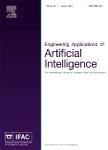版权所有:内蒙古大学图书馆 技术提供:维普资讯• 智图
内蒙古自治区呼和浩特市赛罕区大学西街235号 邮编: 010021

作者机构:Northwestern Polytech Univ Key Lab Ind Design & Ergon Minist Ind & Informat Technol Xian 710072 Peoples R China Xian Technol Univ Sch Art & Media Xian 710021 Peoples R China Hong Kong Polytech Univ Sch Design Hung Hom Hong Kong 999077 Peoples R China
出 版 物:《ENGINEERING APPLICATIONS OF ARTIFICIAL INTELLIGENCE》 (Eng Appl Artif Intell)
年 卷 期:2025年第152卷
核心收录:
学科分类:0808[工学-电气工程] 08[工学] 0811[工学-控制科学与工程] 0812[工学-计算机科学与技术(可授工学、理学学位)]
基 金:National key research and development initiative [2019YFB1405701]
主 题:Product design Product module partition Knowledge hypergraph Hypergraph neural network Clustering algorithm
摘 要:The modular design can effectively control the development cycle and cost of complex product, with product module partition (PMP) serving as the foundation of modularization. However, models constructed based on expert knowledge are inadequate in effectively capturing the relationships within complex product, which undermines the efficiency and accuracy of PMP. To solve this problem, this paper introduces hypergraph theory into the field of PMP, specifically, proposes a PMP method based on the knowledge hypergraph (KHG). First, the multiple coupling relationships between complex product are defined from the perspective of FunctionBehavior-Structure-Constraint, to form the pattern layer of the KHG. Then, the joint learning algorithm, which contains the pretraining model, Bi-directional Long Short-Term Memory network, Conditional Random Field and Attention layer, is proposed to automatically extract design knowledge from large-scale text data to form the data layer of the KHG. Furthermore, considering that the PMP model needs to learn nonlinear relationship features, achieve end-to-end optimization, and have strong anti-noise ability, hypergraph neural networks are used to partition the complex product modules, which contains the importance calculation, hypergraph convolution, modularity maximum and self-supervised module. Finally, a case study is conducted using a snow removal equipment as an example, the knowledge extraction accuracy reaches 91.67 %, and the PMP modularity is 0.68, thus validating the feasibility of the proposed method. Additionally, the comparison is made with other knowledge extraction and hypergraph clustering algorithms using public datasets, which further confirms the feasibility and superiority of the proposed method.